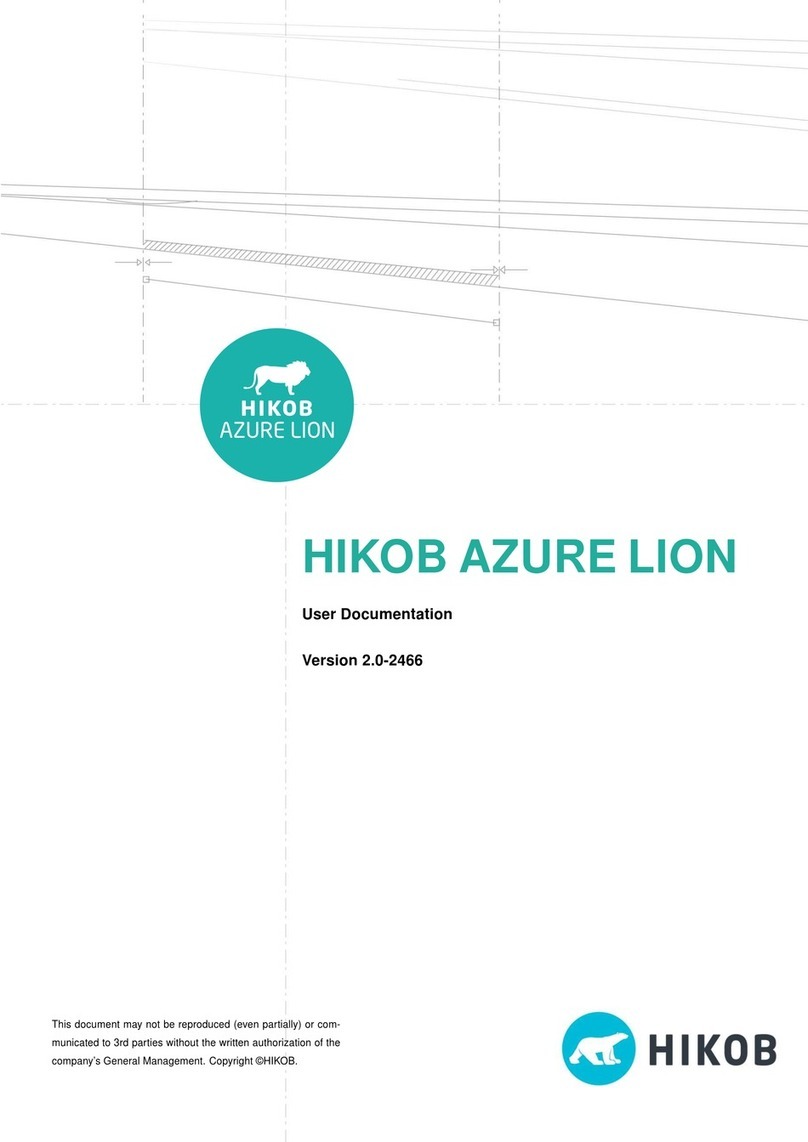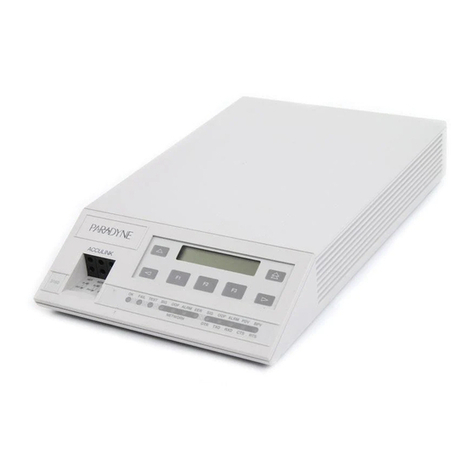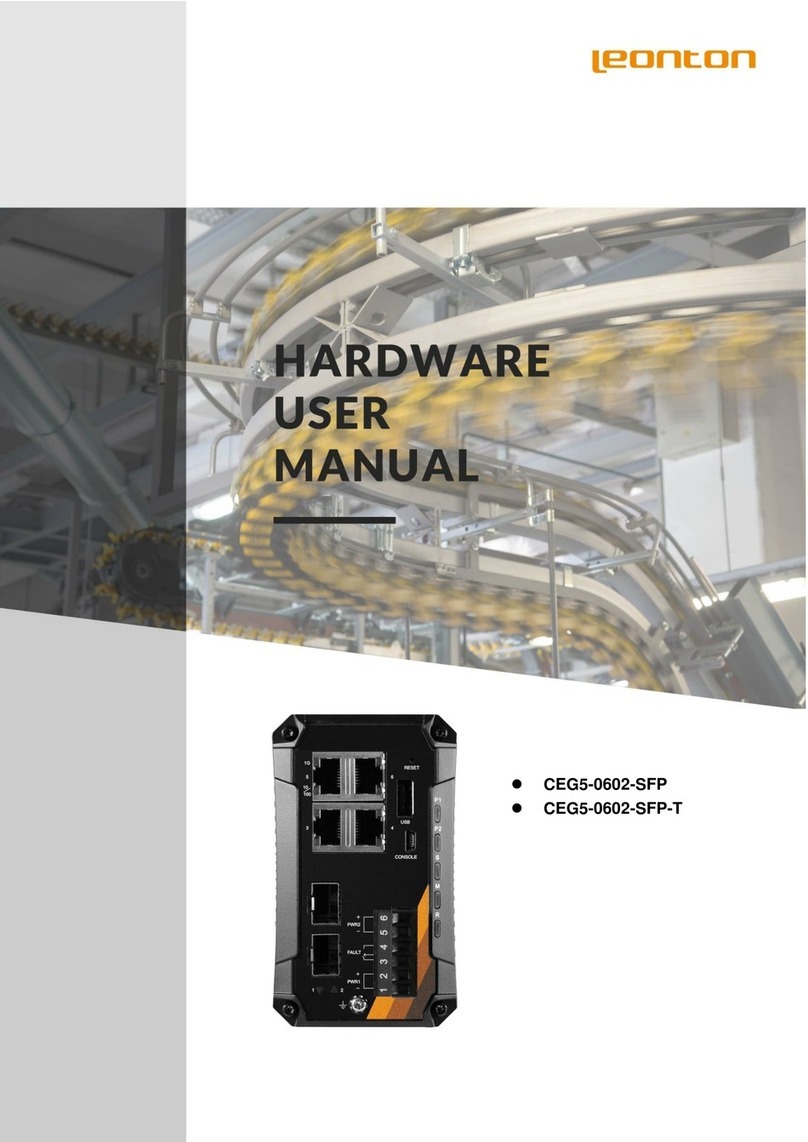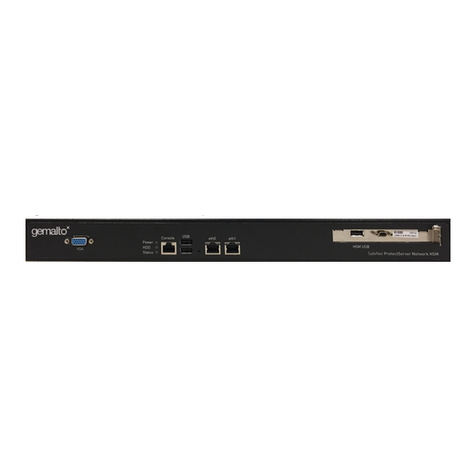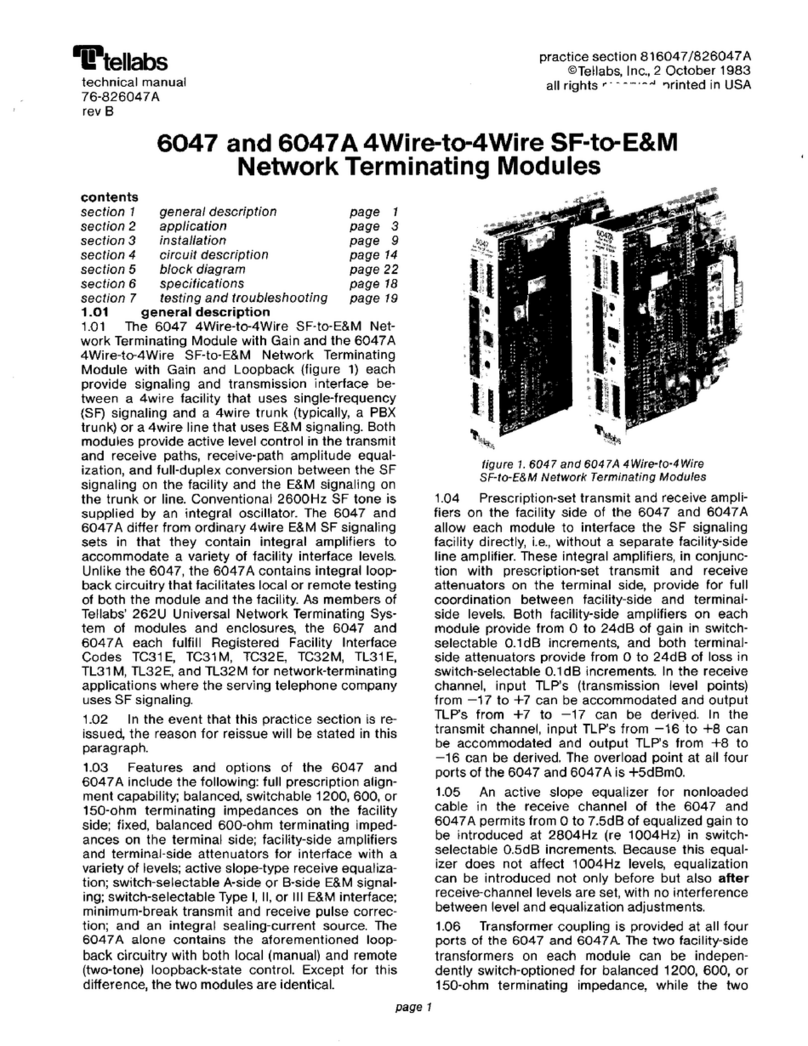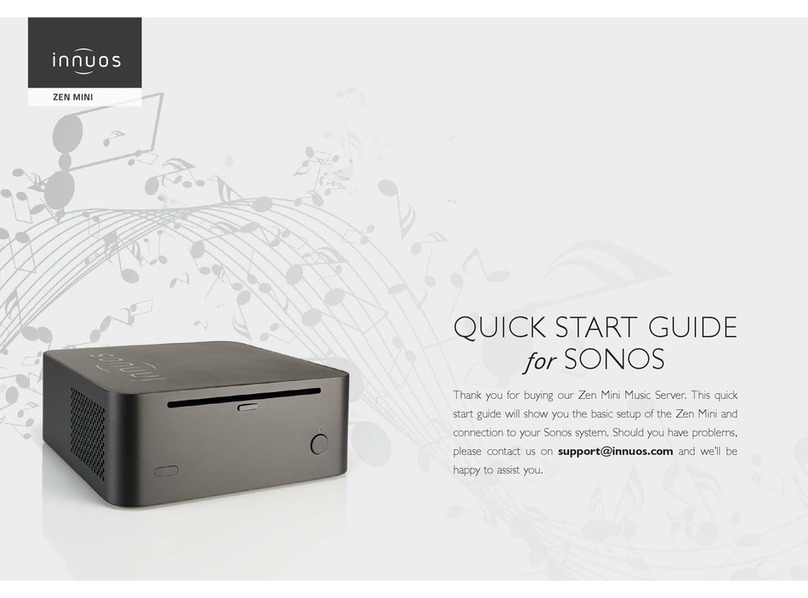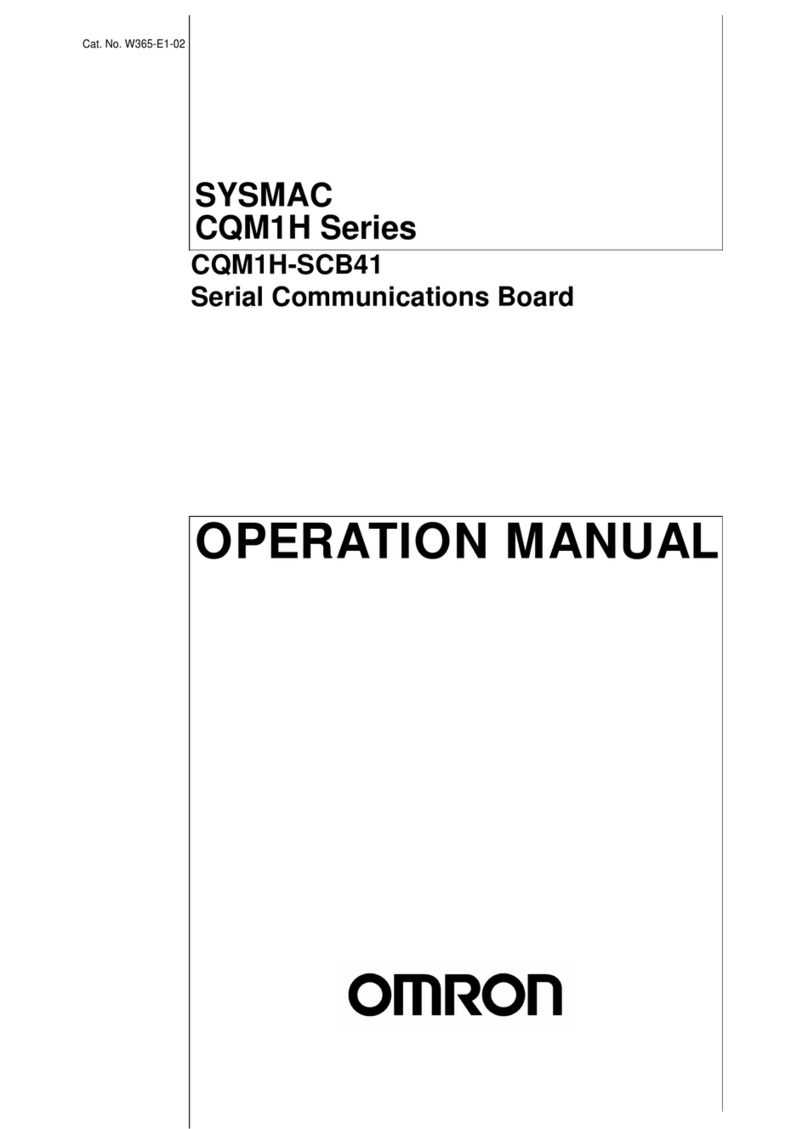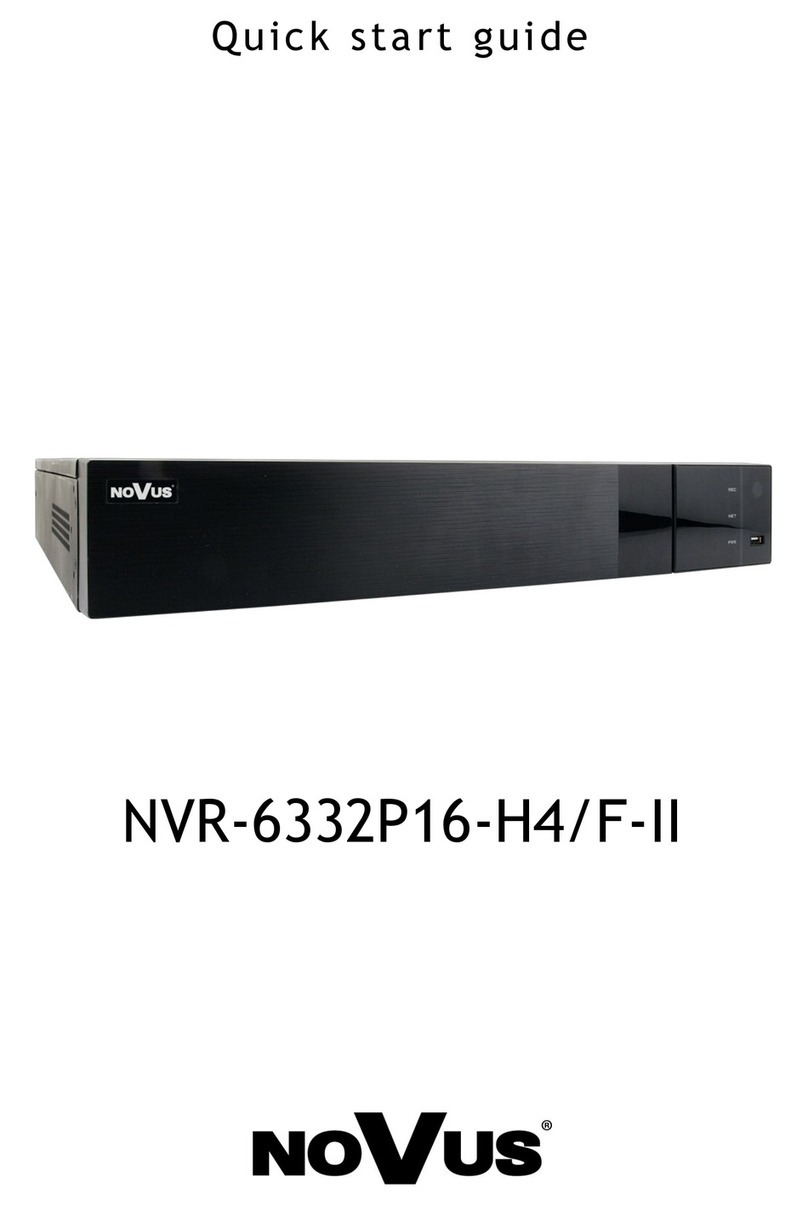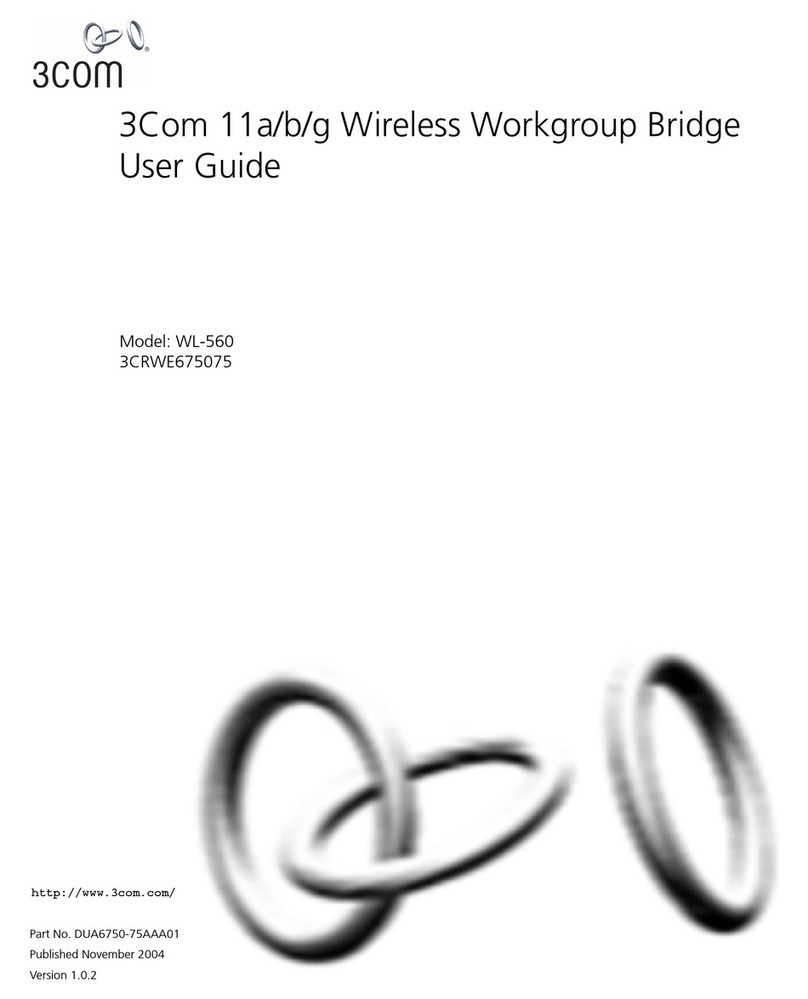HIKOB GATEWAY H-GW103A User manual

Installation guide
Document version 2017V2-EN
This document may not be reproduced (even partially) or communicated
to 3rd parties without the written authorization of the company’s General
Management. Copyright © HIKOB.
Related HIKOB products:
GATEWAY H-GW103A
GATEWAY H-GW103D-G

HIKOB GATEWAY
Document version 2017V2-EN
2017 · Page 2/12
Table of contents
1. Introduction........................................................................................................3
1.1 Symbols and conventions used in this guide........................................................3
1.2 Safety instructions....................................................................................................3
1.3 Compliance and conformity.....................................................................................4
a. Europe........................................................................................................................4
b. Electromagnetic compatibility Japan ...........................................................................5
c. USA ............................................................................................................................5
d. Canada.......................................................................................................................5
1.4 WEEE.........................................................................................................................6
1.5 Technical Support.....................................................................................................6
2. General description...........................................................................................7
2.1 HIKOB Wireless sensor network acquisition system.............................................7
2.2 .HIKOB GATEWAY overview ....................................................................................7
3. Data sheet ..........................................................................................................8
4. Installation .........................................................................................................9
4.1 Overall Methodology........................................................................................9
4.2 HIKOB GATEWAY power supply...................................................................10
4.3 Outdoor deployment.......................................................................................10
a. Ethernet cable set up for outdoor use........................................................................11
b. HIKOB GATEWAY arm’s mounting process..............................................................11

HIKOB GATEWAY
Document version 2017V2-EN
2017 · Page 3/12
1. Introduction
When using HIKOB GATEWAY, safety precautions must be taken to avoid injury and
damages. Please read this guide before installing, using the product, or performing any
maintenance operation. Failure to read, understand and follow herein instructions may result in
personal injury. In no event shall HIKOB be held liable for any damages arising out of or related
to misunderstanding instructions detailed in this manual.
1.1 Symbols and conventions used in this guide
Read entirely this guide before using the product HIKOB GATEWAY and keep
it handy for reference
Caution –Indicates a potentially hazardous situation which, if instructions are not
followed, may result in damage to the equipment.
Electrical Hazard –Indicates a dangerous condition such that, if instructions are not
followed may result in electric shock and physical injury.
–Carefully follow instructions and warnings given in this guide, as well as instructions
indicated on the product.
–Make sure you understand all instructions: refer to symbols definitions and conventions
used in the documentation.
–Should you have questions on using the product HIKOB GATEWAY once you have
completely read this guide, contact the HIKOB support or your vendor.
1.2 Safety instructions
It is forbidden to install the product in a location accessible to the public.
Please refer to the installation section.
Do not disassemble or attempt to open the product. It does not contain any
serviceable parts inside. Only qualified staff is allowed to perform maintenance
operations on the HIKOB GATEWAY product. Opening a HIKOB GATEWAY will
void the warranty.
Do not overheat, do not dispose in fire, do not crush. Do not heat above the
product maximum operating temperature, incinerate, or expose content towater.
HIKOB GATEWAY.

HIKOB GATEWAY
Document version 2017V2-EN
2017 · Page 4/12
Modifications or changes on the product is strictly prohibited if it is not expressly
approved by HIKOB. Modifications or changes performed on HIKOB GATEWAY
will void the user’s authority to operate the equipment.
1.3 Compliance and conformity
a. Europe
The HIKOB GATEWAY product is certified to be compliant with the R&TTE
1999/5/CE directive.
Electromagnetic compatibility and radio Spectrum:
The product HIKOB GATEWAY is certified to be compliant with the following standards:
–ETSI EN 301 489-1 V1.9.2 (2011-09) et ETSI EN 301 489-17 V2.2.1 (2012-09)
–ETSI EN 300 328 V1.8.1 et EN 62311 (2008)
Electrical safety:
The product HIKOB GATEWAY is certified to be compliant with the following normalized
standards:
–IEC 60950-1:2005 + A1:2010 + A2:2013
–EN 60950-1:2006 + A11:2009 + A1:2010 + A12:2011 + A2:2013
–ETSI EN 300 330-1 V1.7.1 (2010/02) et ETSI EN 300 330-2 V1.5.1 (2010/02)
Models A and B of the HIKOB GATEWAY are certified to follow the EN CB 60 950-22 Am2
outdoor safety standard for electrical devices. With exception for Finland, Norway and Sweden,
countries where environment temperature can be lower than operating and safety insurance
temperatures for the HIKOB GATEWAY. You install the HIKOB GATEWAY indoors in those
geographical areas.

HIKOB GATEWAY
Document version 2017V2-EN
2017 · Page 5/12
b. Electromagnetic compatibility Japan
The HIKOB GATEWAY product is certified to be compliant with Japan Radio Law -
Article 2 paragraph 1 Item 19.
c. USA
Information to user: This device complies with part 15 of the FCC Rules. Operation is subject
to the following two conditions: (1) This device may not cause harmful interference, and (2) this
device must accept any interference received, including interference that may cause undesired
operation.
This equipment has been tested and found to comply with the limits for a Class B digital
device, pursuant to part 15 of the FCC Rules. These limits are designed to provide reasonable
protection against harmful interference in a residential installation. This equipment generates,
uses and can radiate radio frequency energy and, if not installed and used in accordance with
the instruction, may cause harmful interference to radio communications. However, there is no
guarantee that interference will not occur in an installation. If this equipment does cause harmful
interference to radio or television reception which can be determined by turning the equipment
off and on, the user is encouraged to try to correct interference by one or more of the following
measures:
–Reorient or relocate the receiving antenna.
–Increase the separation between the equipment and receiver.
–Connect the equipment into an outlet on circuit different from that to which the receiver is
connected.
–Consult the dealer or an experienced radio/TV technician for help.
RF exposure: This device complies with FCC RF radiation exposure limits set forth for general
population. This device must be installed to provide a separation distance of at least 20cm from
all persons and must not be co-located or operating in conjunction with any other antenna or
transmitter.
d. Canada
Transmitter Antenna: Under Industry Canada regulations, this radio transmitter may only
operate using an antenna of a type and maximum (or lesser) gain approved for the transmitter
by Industry Canada. To reduce potential radio interference to other users, the antenna type and
its gain should be so chosen that the equivalent isotropic ally radiated power (e.i.r.p.) is not more
than that necessary for successful communication.

HIKOB GATEWAY
Document version 2017V2-EN
2017 · Page 6/12
Licence-Exempt Radio Appartus: This device complies with Industry Canada licence-exempt
RSS standard(s). Operation is subject to the following two conditions: (1) this device may not
cause interference, and (2) this device must accept any interference, including interference that
may cause undesired operation of the device.
RF Exposure: This device complies with Industry Canada RF radiation exposure limits set forth
for general population. This device must be installed to provide a separation distance of at least
20cm from all persons and must not be co-located or operating in conjunction with any other
antenna or transmitter.
1.4 WEEE
Information on disposal for users of waste electrical electronical equipment:
This symbol on the product(s) and / or accompanying documents means that
used electrical and electronic products should not be mixed with general
household waste. For proper treatment, recovery and recycling, please take this
product(s) todesignatedcollection points where itwill be accepted free of charge.
Alternatively, in some countries you may be able to return your products to your
local retailer upon purchase of an equivalent new product. Disposing of this
product correctly will help save valuable resources and prevent any potential
negative effects on human health and the environment, which could otherwise
arise from inappropriate waste handling.
1.5 Technical Support
HIKOB SA
66 Boulevard Niels Bohr
CS 52132
69603 VILLEURBANNE CEDEX France

HIKOB GATEWAY
Document version 2017V2-EN
2017 · Page 7/12
2. General description
2.1 HIKOB Wireless sensor network acquisition system
The HIKOB GATEWAY is one of the elements that constitutes the HIKOB wireless sensor
radio network. This system is a set of wireless sensors doing multi-point distributed measures
in various domains. These sensors radio transmit their acquired data to the HIKOB
GATEWAY, possibly via HIKOB LION routers, depending on environment constraints for radio
transmission. This local radio network operates in the 2.4GHz ISM bandwidth and implements
the standardized IEEE 802.15.4e protocol. The HIKOB GATEWAY provides the user with
these acquisitions through its embedded software: HIKOB NETPULSE, which makes the
interface to any TCP/IP network.
HIKOB systems cover data acquisitions such as vehicle detection for controlled traffic or
parking management, various measurements in civil engineering structures from stress gauges
to crack/inclino-meters, and vibrations from industrial machines for diagnostic purpose, providing
tools for predictive maintenance for example.
2.2 .HIKOB GATEWAY overview
Figure 1 –External view of HIKOB GATEWAY dimensions: 180x120x37.2 mm
HIKOB GATEWAY interfaces the 2.4Ghz ISM HIKOB radio network by providing connection
with any TCP/IP network. It receives and treats sensors measurements that are broadcasted
through the multi-hop wireless network formed by HIKOB sensors and HIKOB LION routers.
These measurements are available, either displayed on a web page, or via APIs exposed by
180
mm

HIKOB GATEWAY
Document version 2017V2-EN
2017 · Page 8/12
an embedded REST server. Information exposed by the HIKOB GATEWAY can therefore be
integrated in a 3rd party information system. HIKOB GATEWAY provides as well services to
configure HIKOB sensors, and to perform basic maintenance such as firmware update.
The HIKOB GATEWAY is not energy-autonomous: it is powered by the PoE technology
(Power over Ethernet) through an Ethernet cable.
Models A and B of the HIKOB GATEWAY can be installed and used outdoor. The HIKOB
GATEWAY casing is water resistant with an IP65 protection. The first number 6 identifies
protection against complete ingress of dust, the second number 5, identifies protection against
the effects of spraying water. Should you decide to perform cleaning tasks on the HIKOB
GATEWAY, don’t perform high pressure cleaning, prefer wiping with a dry cloth, or with a
neutral agent.
Radio and GPS antennas are integrated into the envelope of the HIKOB GATEWAY, which
are delivered all assembled and ready to be fastened on a pole or a wall, please refer to the
Installation section for details.
.
3. Data sheet
Power supply Power over Ethernet with RJ45 connector following the 802.3at, 802.3af norm.
(which corresponds for this product to 36 - 57 VDC, 0.1Amax).
Packaging IP65 according to EN 60529
Dimensions 22 x 12 x 3.8 cm
Weight 360g
Temperature Operating and Storage -20°C +60°C
Radio
Frequency Band 2.4GHz ISM
Protocol IEEE 802.15.4e
Antenna gain +3dBi
Input level sensitivity -101dBm
Output power +4dBm
Range 30m to a buried sensor

HIKOB GATEWAY
Document version 2017V2-EN
2017 · Page 9/12
GPS
Constellation GPS L1
Antenna type Active patch
Antenna gain25dBInstallation
4. Installation
4.1Overall Methodology
Installing an HIKOB radio network requires a good topology analysis of your site to maximize
radio transmission quality by optimizing positions and numbers of HIKOB nodes in the network.
A preliminary study done with your vendor determines elements that will constitute your HIKOB
radio network acquisition.
Draw a site map: position your stationary sensors on parking places for HIKOB WISECOW-
P; on the way where passing vehicles should be controlled for HIKOBWISECOW-T; where road
temperature have to be measured for HIKOB WISECOW-W; and so on with other sensors types.
Then you can determine the number of routers you need for your network following these rules:
–The maximum distance between buried sensors and the HIKOB GATEWAY is 30m.
–The maximum distance between a HIKOB LION and a HIKOB GATEWAY, varies
between 100 and 300m, depending on the terrain topology.
–A HIKOB GATEWAY hosts 80 elements in all, and 30 as direct children in the multi hop
radio network.
–The HIKOB LION, the HIKOB router hosts 16 sensors or other routers.
For good radio transmission, both HIKOB GATEWAY and HIKOB LION need to be installed
on elevated spots, around 5m high. You will have better signal transmission with routers close
to sensors and far from other routers or HIKOB GATEWAY.
Keep In mind that RF waves quality heavily rely on the environment they propagate in.
Identify the most distant sensors, and zones where you suspect waves will propagate painfully,
like having metal or concrete obstacles in the way.
The HIKOB GATEWAY provides useful user information to appraise the radio signal quality
between elements of the HIKOB network. Refer to section Radio quality link in the HIKOB
NETPULSE manual for that.

HIKOB GATEWAY
Document version 2017V2-EN
2017 · Page 10/12
4.2 HIKOB GATEWAY power supply
The HIKOB GATEWAY is powered via Ethernet using the PoE technology (Power over
Ethernet) based on the 802.3af-2003 and 802.3af-2009 standards. This allows both data and
power delivery over category 5e or better cables. So ideally your site has an Ethernet network
carrying cables providing PoE.
If your site does not provide a connection insuring the standard PoE technology, then
you need to use a PoE injector that must be compliant with the 802.3af-2003 and 802.3af-
2009 norm. This standard ensures interoperability between your power sourcing equipment
and the powered device HIKOB GATEWAY.
The PoE connector stamped OUT goes to the HIKOB GATEWAY.
The PoE connector stamped IN goes to your IP network.
You supply the PoE injector with cables and plugs following your country / area
safety directives for electrical devices.
4.3 Outdoor deployment
The HIKOB GATEWAY is suitable for outdoor use: the envelope has maximum protection
against dust ingress, and is water resistant (IP65).
In case of an outdoor installation and power for the HIKOB GATEWAY is supplied by
a PoE injector, you will have to pay attention to the standard safety rules installing
electrical devices outside..
Most likely you’ll need a technical electrical enclosure to host the PoE, and to supply
power. Some PoE are sold to be useable outdoor, some are sold with an extra IP66
enclosure, when choosing your equipment, pay attention to the 802.3af-2003 and 802.3af-
2009 compatibility and to operating temperatures as well. HIKOB has some product
references to advise, ask our vendors.
Consider as well other alternatives: you can have the HIKOB GATEWAY installed
outside, and the PoE inside.

HIKOB GATEWAY
Document version 2017V2-EN
2017 · Page 11/12
a. Ethernet cable set up for outdoor use
HIKOB provides an industrial connector housing (Amphenol Socapex RJF RB 6, which
is IP67), to be mounted on the Ethernet cable before connecting it to the HIKOB
GATEWAY. This is a protective sealed and hardened envelope which can be added around
any standard RJ45 connector. Choose an Ethernet cable suitable for outdoor use. You
don’t need tools to equip your Ethernet cable, just follow these step by step graphical
instructions:
Figure 3 –: Steps to dress the Ethernet cable with the Amphenol connector housing
Pull a Cat.5e Ethernet cable from your electrical cabinet, not going further than 100m long,
to ensure data rate quality. Don’t connect it while you’re doing the installation.
Mount the Amphenol Socapex on the end of the cable that goes to the HIKOB GATEWAY
Plug this set up connector to the female Ethernet connector on the back of the HIKOB
GATEWAY.
b. HIKOB GATEWAY arm’s mounting process
The HIKOB GATEWAY is delivered ready to be installed. HIKOB highly recommends using
RAM MOUNTS® products that can be optionally purchased with your HIKOB GATEWAY,
ask your vendor. This is a set of 3 elements:

HIKOB GATEWAY
Document version 2017V2-EN
2017 · Page 12/12
A first ball joint with a male screw that does the female thread on any 4
holes of the HIKOB GATEWAY casing.
RAP-379U-M616
A second ball joint, to be mounted on a wall or a pole. It can be either
screwed or attached with plastic clamps, or any method that suits
your environment constraints.
RAM-2461U
And the double socket arm allowing good adjustment.
RAM-201U-B
Figure 4 –View of the HIKOB GATEWAY attached on a pole with RAM mount joints
Other manuals for GATEWAY H-GW103A
1
This manual suits for next models
1
Table of contents
Other HIKOB Network Hardware manuals
Popular Network Hardware manuals by other brands
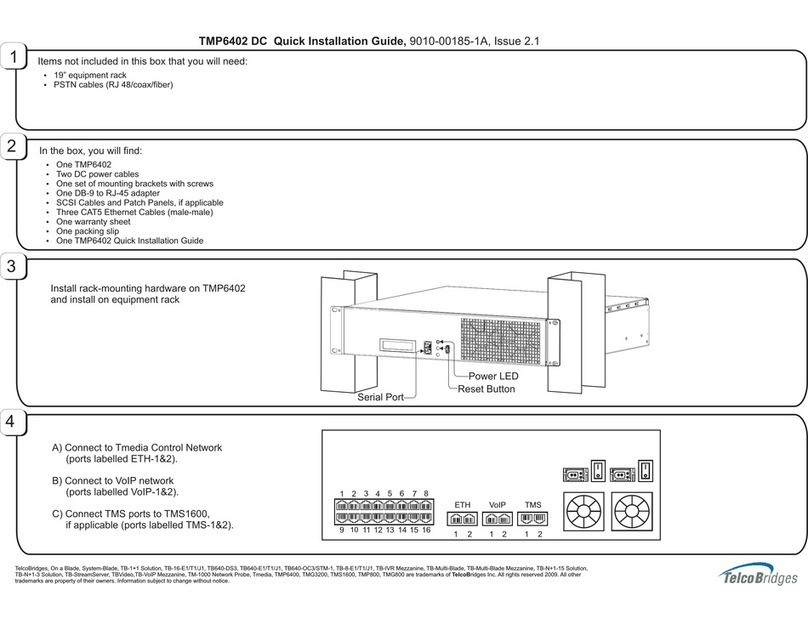
TelcoBridges
TelcoBridges TMP6402 DC Quick installation guide
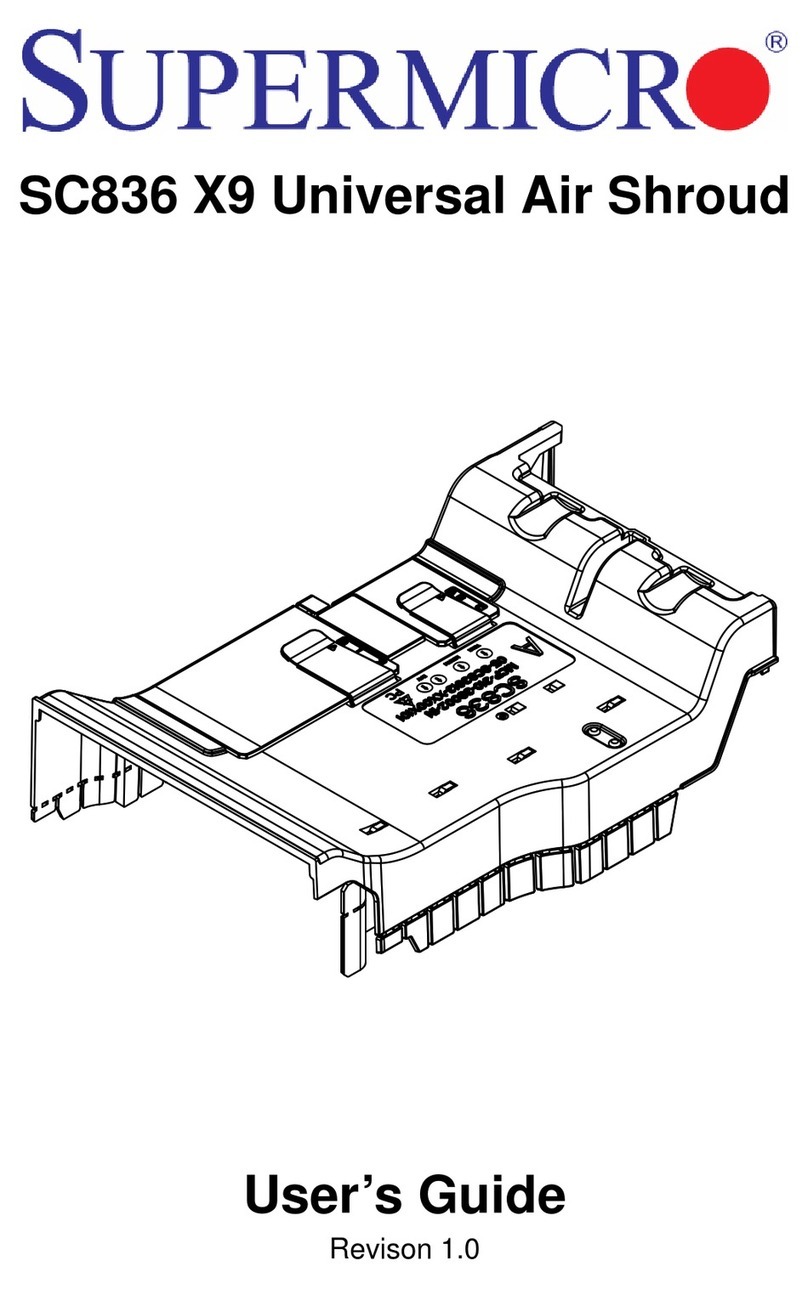
Supermicro
Supermicro SC836 X9 user guide
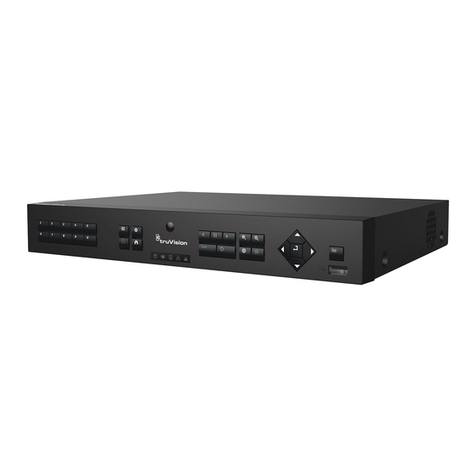
Interlogix
Interlogix TruVision NVR 11 user manual

Moxa Technologies
Moxa Technologies NPort IA 5250 series user manual
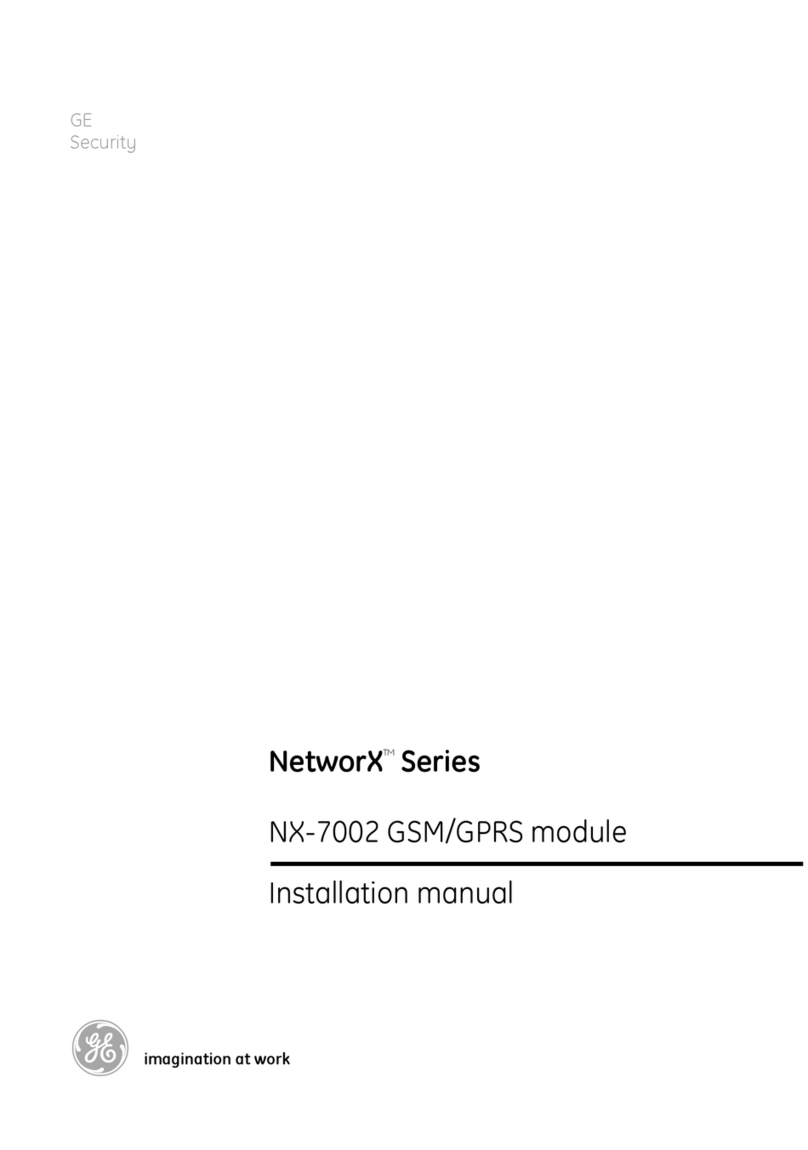
GE
GE NetworX NX-7002 installation manual
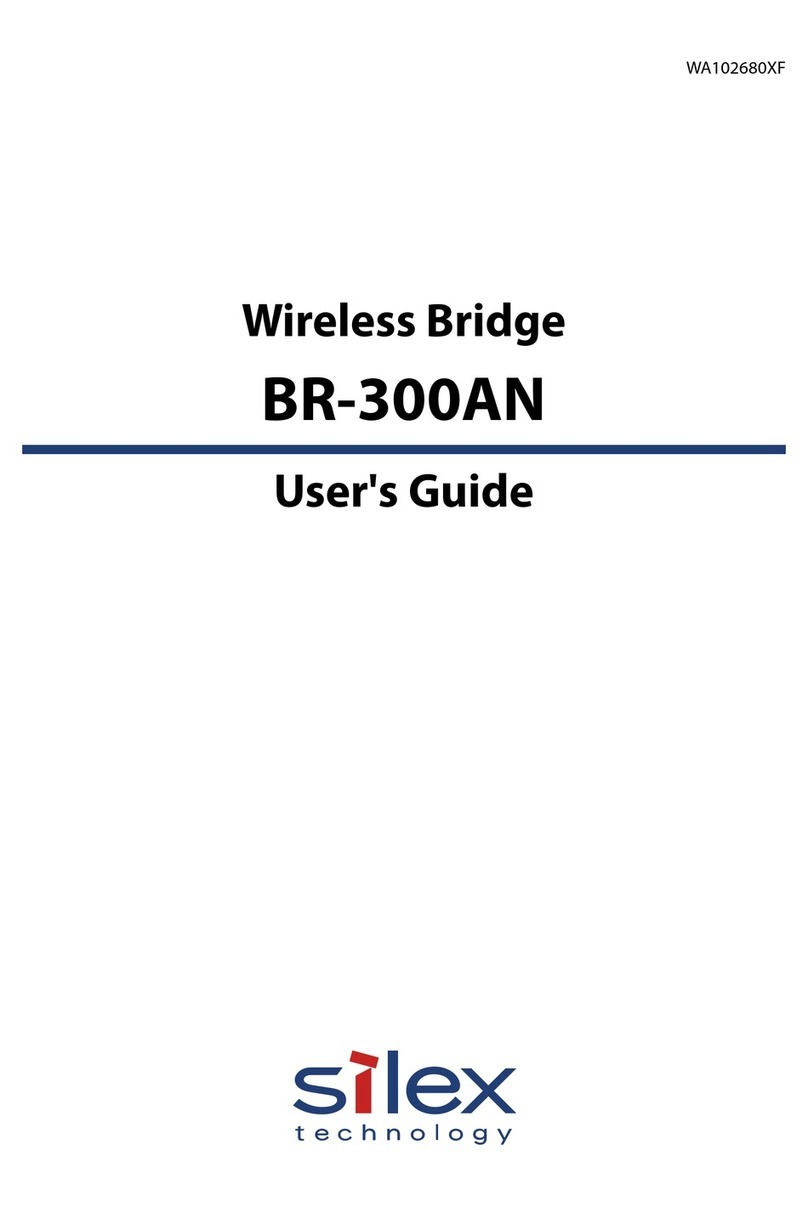
Silex technology
Silex technology BR-300AN user guide
